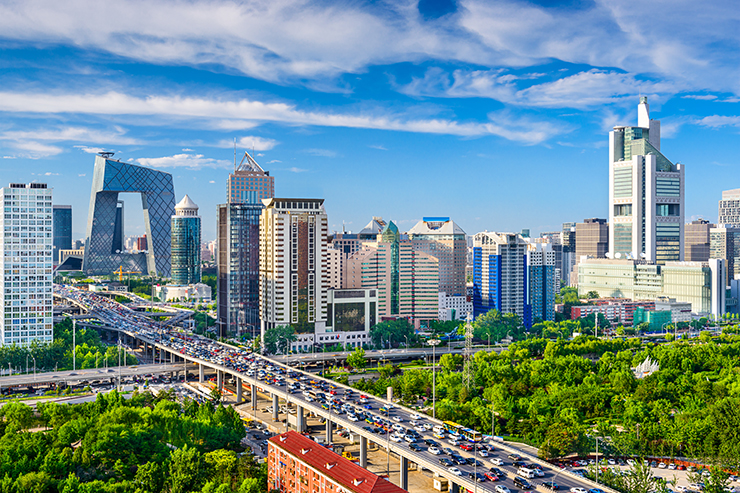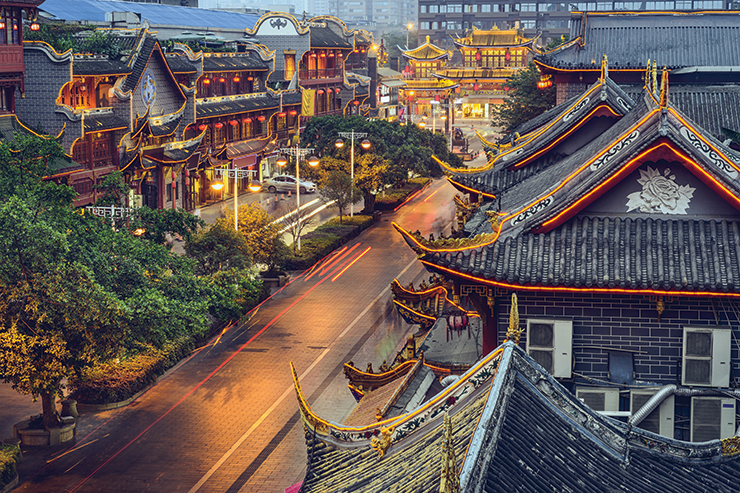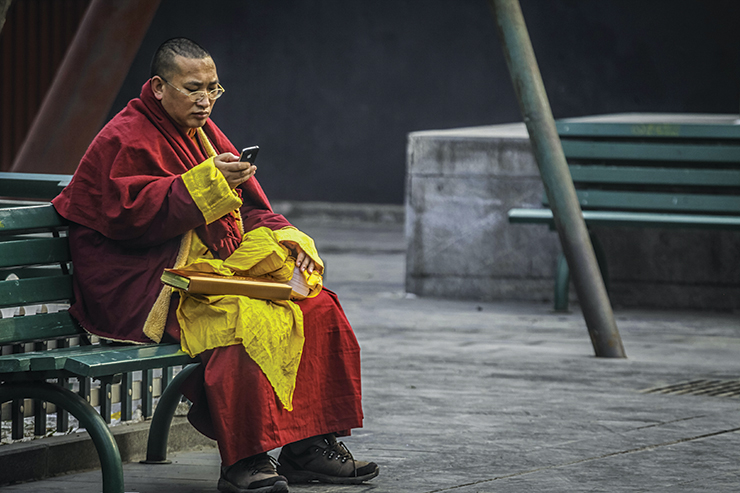By Brian Antoni
Thirty-five years ago, I danced my way through China. I was 20, and it was my first trip to China. I visited my cousin, Lorraine, who was studying Mandarin in Beijing. I remember how I stood out amid a sea of Chinese men and women wearing utilitarian green, blue and gray Mao suits. Everything was drab and dark. There were no billboards or advertisements; no luxury goods for sale. Restaurants were scarce. Westerners were rare, so everywhere I went people stared. Crowds surrounded me in fascination. Babies screamed. I felt like a celebrity. Or, perhaps more accurately, a freak.
When Lorraine and I entered the state-owned Friendship store, we were met by store clerks desperate for a personal introduction to the West. They even begged us to teach them to dance “rock and roll.” They would play a bootlegged tape, and as my cousin and I danced, they robotically copied our moves.
Back then, Beijing had wide boulevards crammed with millions of bicycles. I borrowed one from a student and tried to join them. I was such a distraction that people rode into one another, toppling over, falling like dominoes.
“As I drive through Beijing, I can scarcely believe my eyes. The streets are jammed with cars instead of bicycles. Capitalism has become the new Communism. The ancient land of the dragon has become the ultra-modern land of the building crane.”
Now, as I drive through Beijing, I can scarcely believe my eyes. The streets are jammed with cars instead of bicycles. Capitalism has become the new Communism. The ancient land of the dragon has become the ultra-modern land of the building crane. As I tour Beijing, I’m dumbfounded by the amount of development. The ancient walled compounds I remember have been replaced by endless, optimistic, bizarre skyscrapers. The pace is frenzied. Gigantic shopping centers and restaurants are everywhere. People are dressed in the latest fashions. Lady Gaga blares on the cab radio. It’s like everything has gone from black and white to Technicolor, from slow motion to fast forward. I pass a McDonald’s, Pizza Hut, Chanel, Armani, Ralph Lauren and Starbucks on my way to Tiananmen Square. If Mao weren’t embalmed in a glass mausoleum, I swear he would be turning in his grave at this onslaught of capitalism from the land of the paper tiger.
Tiananmen Square is the largest plaza in the world and can hold a million people. I stroll and watch hundreds of foreign tourists and groups of Chinese tourists wearing brightly colored baseball caps and matching bags. They form a kaleidoscope of color. I shut my eyes and try to picture the student massacre that took place here in 1989. I see the lone student protester standing in front of the tank. Then, I open my eyes and notice a monk wearing a saffron robe staring at me. Our eyes meet, just as his cell phone rings—playing “Jingle Bells.” I smile and realize I am in the new China.

Chinese Changes: As China experiences an age of industrialism and commercialization, large-scale buildings and technology juxtapose against its traditional setting.
Across the square is the Forbidden City, the expansive imperial palace of the Ming and Qing dynasties, where 24 Chinese emperors ruled China for 500 years and commoners were refused entrance. I try to imagine what life must have been like for the countless servants, concubines, mandarins and especially the thousands of eunuchs. Our tour guide cheerily informs us that pepper water was used to numb the eunuchs before their “treasures” were sliced. The missing body part was then preserved to later be buried with its respective body.
My next stop is the Great Wall. There is a saying in China that you are not a man unless you have climbed the Great Wall. I’m shocked that right outside the entrance is a Subway restaurant. The Great Wall is one of the largest construction projects ever completed. I remember getting out of breath the last time I climbed the steep steps to the top of the wall. This time I rode a chairlift to the top, where I made my way up to a tower and bought a “I Climbed the Great Wall” T-shirt.
The last time I was in China I stayed in a primitive college dorm room with hard beds and cold showers. Now, I am in the lap of luxury—at the modern and high-tech, yet unfussy, East Beijing Hotel, with one of the best showers I have ever experienced. It is like a monsoon raining on me. The hotel’s amazing art makes you feel like you’re staying in a gallery. The hotel adjoins the Indigo shopping mall, and is near the 798 Art District, a 50-year-old decommissioned military factory complex that now houses a thriving working artist community.
In Beijing, I ate both the best and worst meals of my life. On Wangfujing Street, I pick my way up the street, sampling bizarre foods: deep-fried scorpions (not bad; crunchy and salty like peanuts with legs); locusts (like chicken wings filled with sour marshmallow); silkworm cocoons (kind of like slimy shrimp stuffed with putrid yogurt); and starfish (like eating brittle, rotten fish bones). For dessert, I tried donkey penis, which is gamey and gelatinous. I’m still waiting for the promised aphrodisiac effect.
In contrast, I experience one of the best meals at the Jing Yaa Tang restaurant inside The Opposite House hotel. Its specialty is juicy, moist, tender, crispy Beijing duck, which was roasted under a roaring fire of fragrant fruit woods. Red cherry tomatoes marinated in a sweet reduction of huamei—a Chinese sour plum pickled with salt and sugar—proved to be the perfect companion to the stellar bird. This meal is one of the culinary wonders of the world. After Beijing, I fly to the delightful city of Chengdu in Southwest China to see the Giant Pandas. I stay in The Temple House, a recently opened hotel where old melts into new, traditional into modern. A beautifully restored centuries-old courtyard building leads along polished stepping stones, past a historic temple built during the Jin Dynasty, to a breathtaking modern building covered in a beautiful brick pattern relating to Sichuan’s tradition of weaving.
I head to the Chengdu Research Base of Giant Panda Breeding, a nonprofit research and breeding facility. Founded in 1987, the base started with six giant pandas rescued from the wild. By 2008, more than 100 pandas had been born there. As I watch the cuddly bears hobble around, nibble on bamboo and lull about, I remind myself that these are real creatures and not childhood fantasies. The highlight is the panda nursery, where I’m transfixed by a litter of cubs in a cot. They are so beautiful and small, like black-and-white teddy bears come to life. I fight the urge to grab one and take it home. On my last night in China, I go to a club and watch the well-shod crowd. They wear the latest styles, running the gamut from Goth to post punk, while the disc jockey mixes techno, reggae and soul, and lasers squiggle across the room. I remember 35 years ago when I was teaching the Chinese to dance, and now they are teaching me a move or two. No one looked at me. I was no longer a celebrity, just another Western tourist. I wonder what changes the next 35 years will bring.
Originally appeared in the Fall 2016 issue.





